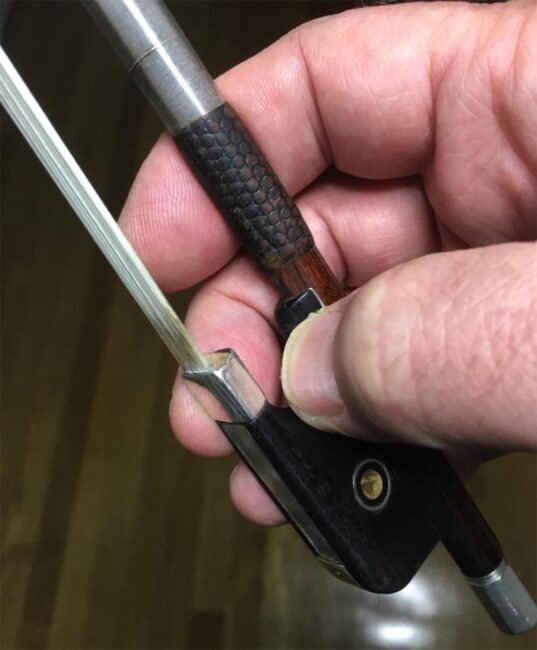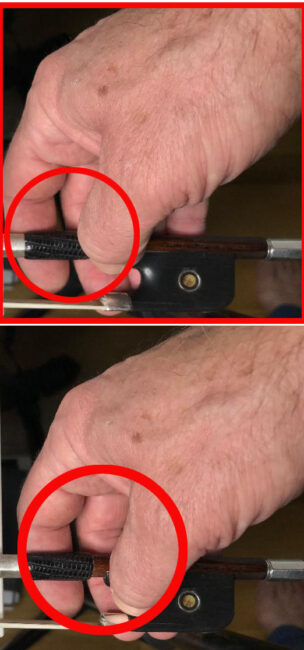A Consideration of the Bow Hold
There is pressure THROUGH the thumb, not FROM the thumb. As you rotate the forearm and hand counterclockwise (pronation), the index finger naturally applies pressure down as the thumb applies pressure upwards. This does not come from squeezing, this comes from rotation, and it is applying the weight of the arm into the string. My thumb is flexible, but from a position of being slightly bent. While there are many small variations as to how to hold the bow, the basic principles of leverage and flexibility are common to all effective bow holds.
The Thumb and forefinger create a class 3 lever system, which allows us to apply the weight of the arm into the string.
A class 3 lever system:
object (string) force (index finger) fulcrum (thumb)

I use a hold that I learned from Antonio Janigro, and which was also used by Rostropovich, and occasionally by Harvey Shapiro and Lynne Harrell. Due to its location on the frog, it expands the size of the fulcrum, which increases leverage, and it puts the thumb against a smoother and more comfortable area of the frog than many cellists utilize.

While I like this very much, and find it very comfortable, it really isn’t different as to how it functions from a traditionally taught hold, as you move from the frog towards the tip, the right elbow rises and the forearm rotates, causing the hand to pronate. This pronation in turn focusses the weight of the arm/hand/bow into the string via leverage. What the hold pictured above does accomplish is that it increases the potential leverage by increasing the area over which the hand rotates by @21%.

top picture is of a “typical” bow hold
Bottom picture is the one I use.
Both photos were taken with the camera mounted in exactly the same position and the bow held in a fixed position (exactly the same)
In measuring the two circles in the pictures above, I found that the top example of a typically placed thumb created a circle with a circumference of 3 3/16 inches, and the second (alternative) placement created one of 3 14/16 (these measurements are relative to the scaling of the photos, not an absolute measure, but accurate for comparison). This is an increase of 21.4%. If one applies the same degree of rotation to each example, as one does approaching the upper part of the bow, the hold in the bottom photo creates more leverage, a greater application of arm/hand/bow weight into the string in the upper part of the bow.
